Leather watch straps are celebrated for their durability, comfort, and aesthetic charm. However, akin to a pair of exquisite leather boots, they necessitate a period of ‘breaking-in’ to attain their ideal fit and feel. This initial phase allows the strap to conform to the wearer’s wrist, enhancing comfort and ensuring a perfect fit. This guide provides helpful tips and tricks to quicken and ease this ‘breaking-in’ process for leather watch straps.
What Is A Leather Watch Strap?
A leather watch strap is meticulously crafted to provide both comfort and support while adding a touch of style to the wearer’s wrist. It is typically made from animal hide, such as cowhide or calfskin, although synthetic materials may also be used. Leather watch straps offer a great deal of flexibility in customizing your look, with many colors and finishes available to choose from.
Preparing the Watch Strap
Before attempting to break in a leather watch strap, it is crucial to verify that the strap has been correctly fitted and adjusted. This means making sure that all of the straps holes have been punched out with a proper size hole punch, and that the buckle has been securely fastened onto the strap. Additionally, it is important to make sure that there are no loose or frayed edges on the strap that could snag or cause discomfort while wearing it.
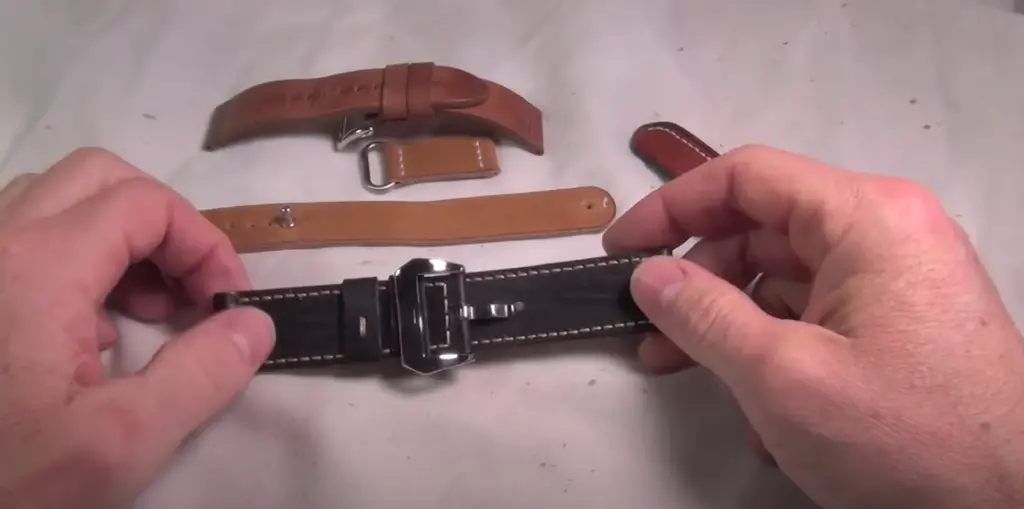
Breaking in the Strap
Breaking in a leather watch strap is not an overly difficult process, but it can take some time and patience to complete. One of the best ways to begin breaking-in a new leather watch strap is to wear it around for short periods of time. Start by wearing the watch strap for one hour a day, and gradually increase the duration of time that you wear it each day until you are comfortable with the feel of it on your wrist.
Finally, for particularly stubborn watch straps, it may be necessary to use a leather conditioner or moisturizer on the strap to help soften the material even further. This should only be done with high-quality leather conditioners that are designed specifically for use on watch straps, as many other conditioners can damage the material.
By following these steps, you should be able to break in your leather watch strap with relative ease and enjoy its comfort for many years to come. [1]
Proper Care and Maintenance of a Leather Watch Strap
Once your leather watch strap has been broken in, it is important to properly maintain it in order to keep the material looking and feeling good. This entails regularly cleaning and conditioning leather straps using specialized cleaners specifically formulated for this purpose. Additionally, it is important to avoid getting the strap wet as much as possible, and to store it away from direct sunlight when not in use. By taking proper care of your watch strap, you can ensure that it will remain comfortable and looking like new for many years to come.
Advantages of a Leather Watch Strap
Leather watch straps offer several advantages over traditional metal or rubber straps. First, they are more comfortable as the material conforms to the shape of your wrist after breaking in. Additionally, leather straps can also last longer than other materials if properly cared for. Finally, many people find the classic look of a leather strap to be much more stylish and timeless than other options.
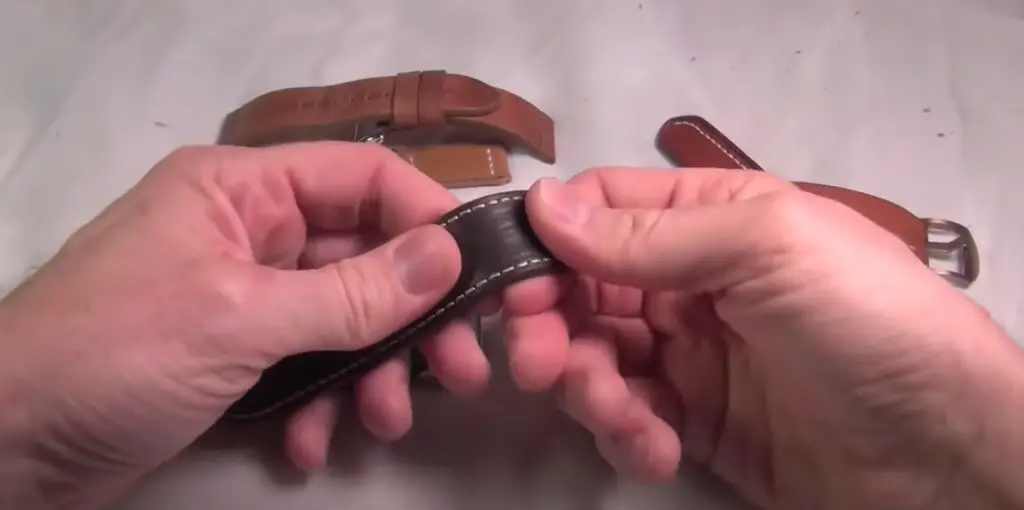
Disadvantages of a Leather Watch Strap
Leather watch straps also have some drawbacks. For one, they require a bit of upkeep in order to stay in good condition. This includes regularly cleaning and conditioning the leather to prevent dryness or cracking. Additionally, it can take a while for the leather strap to “break-in” and become comfortable on your wrist meaning you may experience some initial discomfort wearing it. [2]
Conditioning And Polishing It Periodically
To ensure a long lifespan for your leather watch strap, it is important to condition and polish it periodically. This can be done with specialized leather care products, or with some basic home ingredients such as olive oil or vinegar. Additionally, make sure to avoid getting the strap wet as this could lead to staining or warping of the leather.
Leather Watch Strap Types
A variety of leather watch straps are available, each distinguished by the type of leather used and the pattern or texture of the strap itself. Among the common options are:
- Vegetable tanned leather
- Calfskin leather
- Bonded leather
- Full-grain leather
Each type has its own advantages and disadvantages, so it is important to research which one best suits your needs. [3]
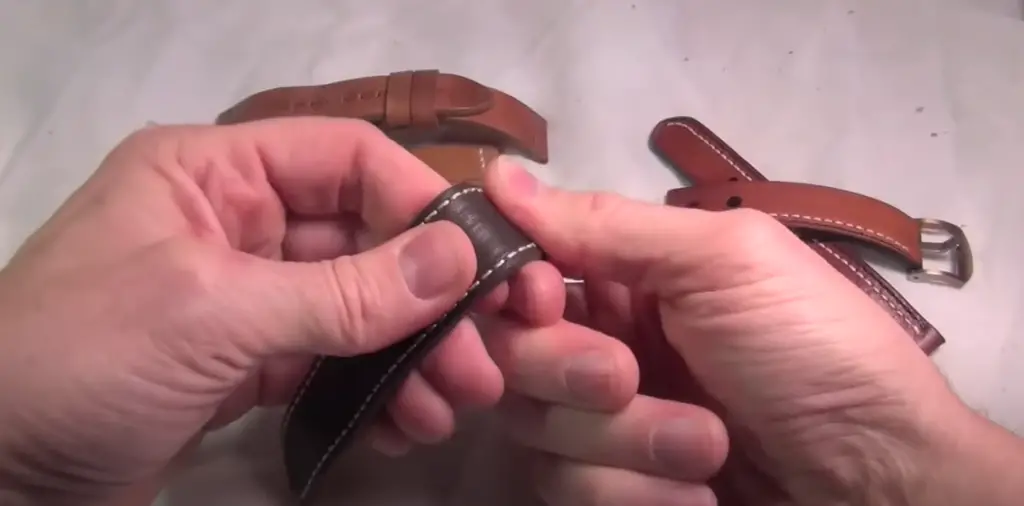
Why Does Leather Need to Be Broken In?
Leather is a natural material that softens and conforms to the shape of your wrist when it is broken in. Breaking-in also helps to prevent stiffness and discomfort while wearing the watch strap. This process can take several days or weeks, depending on how often you wear the watch and how much movement your wrists make on a daily basis. To help speed up the process, many people choose to wear the watch for a few hours a day or use a leather softener to soften the material faster. [4]
Storing Tips for Leather Watch Straps
When not in use, it is important to store your leather watch strap properly. This helps to prevent damage from dust or moisture. The best option is to keep the strap in a cotton pouch or drawstring bag and store it in a cool, dry place away from direct sunlight. Additionally, avoid storing it near heat sources such as radiators or fireplaces, as this could cause the leather to dry out and crack. Finally, make sure to check for signs of wear regularly and replace the strap if necessary.
Alternatives to Leather Straps
If you prefer not to use leather watch straps, there are several other materials available. Leather alternatives such as silicone or rubber straps offer similar comfort and style but without the need for regular maintenance. Additionally, metal bracelets have become increasingly popular in recent years due to their durability and classic look. No matter what material you choose, make sure it fits your lifestyle and meets your needs. [5]
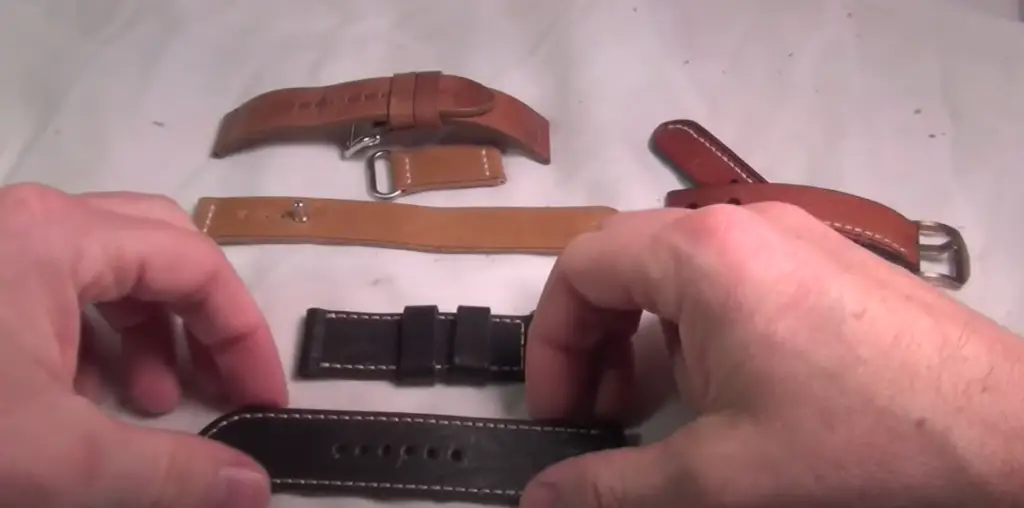
FAQs
Why do I need to break in my leather watch strap?
Breaking in the watch strap is necessary to help it conform to the shape of your wrist and prevent discomfort while wearing. This process can take several days or weeks, depending on how often you wear the watch and how much movement your wrists make on a daily basis.
What type of leather should I choose for my watch strap?
The type of leather you choose for your watch strap depends on your needs and preferences. Common options include vegetable tanned leather, calfskin leather, bonded leather, and full-grain leather. It is important to research each type to determine which one best suits your lifestyle.
What are some alternatives to a leather watch strap?
Alternatives to a leather watch strap include silicone or rubber straps and metal bracelets. These materials offer similar comfort and style but without the need for regular maintenance. Additionally, they tend to be more durable than leather straps which can be beneficial depending on your lifestyle.
How should I store my watch strap when it is not in use?
When not in use, it is important to store your watch strap properly. This helps to prevent damage from dust or moisture. The best option is to keep the strap in a cotton pouch or drawstring bag and store it in a cool, dry place away from direct sunlight. Additionally, avoid storing it near heat sources such as radiators or fireplaces, as this could cause the leather to dry out and crack.
How long does it typically take to break in a leather watch strap?
Breaking in a leather watch strap can take several days or weeks, depending on how often you wear the watch and how much movement your wrists make on a daily basis. To help speed up the process, many people choose to wear the watch for a few hours a day or use a leather softenerto soften the material faster.
How often should I condition and polish my leather watch strap?
To ensure a long lifespan for your leather watch strap, it is important to condition and polish it periodically. This can be done with specialized leather care products, or with some basic home ingredients such as olive oil or vinegar. Additionally, make sure to avoid getting the strap wet as this could lead to staining or warping of the leather.
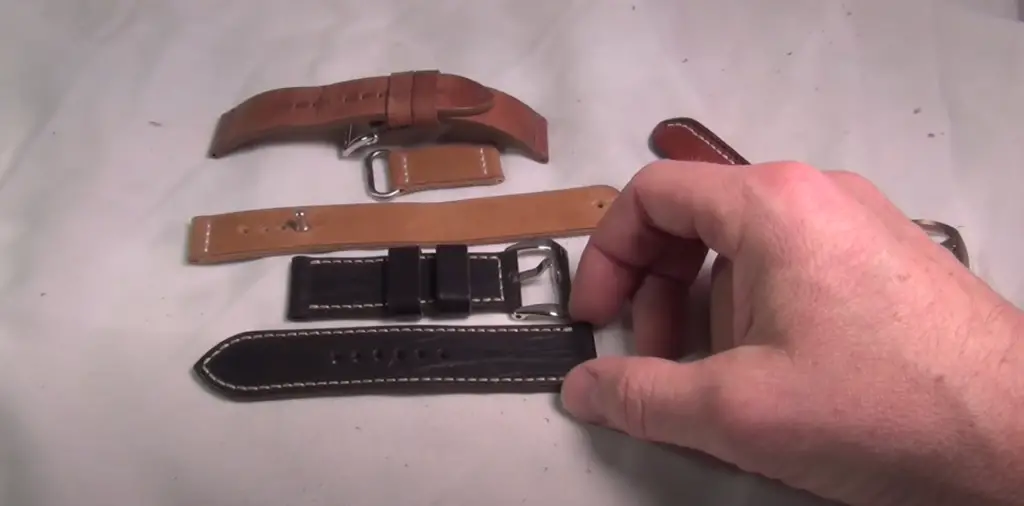
How do I know when to replace my leather watch strap?
It is important to check for signs of wear regularly and replace the strap if necessary. Signs of wear can include discoloration, dryness or cracking of the material. Additionally, if the strap becomes too stiff or uncomfortable on your wrist it may be time for a replacement.
Are there any quick methods for breaking in a leather watch strap?
To help speed up the process of breaking in a leather watch strap, many people choose to wear the watch for a few hours a day or use a leather softener to soften the material faster. Additionally, some people find that applying olive oil or other natural oils can help to break-in the strap quickly. Regardless of which method you choose, make sure to condition and polish the strap periodically to help maintain it’s lifespan.
Can I damage my leather watch strap by not properly breaking it in?
Yes, if the watch strap is not broken in properly it can lead to discomfort and stiffness while wearing. Additionally, improper breaking-in can cause dryness or cracking of the material which may reduce the lifespan of your leather watch strap. Therefore, it is important to research different methods for breaking in a leather watch strap before wearing it to ensure optimal comfort and longevity.
Is there a difference in the break-in process for different types of leather?
Yes. Depending on the type of leather, you may need to use different methods or products for breaking in the watch strap. For example, vegetable tanned leather is often more difficult to break in as it tends to be thicker and stiffer than other types of leather. Therefore, make sure to research which method works best for your specific type of material before beginning the process.
What other materials can I use for my watch strap?
In addition to leather, there are several other materials available for watch straps such as rubber, silicone, and metal bracelets. Each material offers a unique look and level of comfort and durability which must be taken into consideration when choosing the best option for your needs. Additionally, you may want to consider the type of watch you are using as some materials may not be suitable for certain models.
How should I clean my leather watch strap?
Cleaning a leather watch strap is an important part of its maintenance and should be done periodically. The best way to clean your strap is with a soft cloth and mild soap or specialized leather cleaning products. Additionally, make sure to avoid getting the strap wet as this could lead to staining or warping of the material. After cleaning, allow the strap to air dry before wearing it again. It is also important to condition and polish the leather regularly to help extend its lifespan.
How can I prevent damage from moisture on my leather watch strap?
To help protect your leather watch strap from damage caused by moisture, it is important to store it in a cotton pouch or drawstring bag and store it in a cool, dry place away from direct sunlight. Additionally, consider using a waterproof spray to help protect the leather from rain or snow. If the watch strap does become wet, make sure to allow it to air dry before wearing again.
What is the best way to store my leather watch strap when not in use?
When not in use, the best option for storing your leather watch strap is in a cotton pouch or drawstring bag. This helps to prevent damage from dust or moisture and should be stored in a cool, dry place away from direct sunlight. Additionally, avoid storing it near heat sources such as radiators or fireplaces, as this could cause the leather to dry out and crack. Finally, make sure to condition and polish the strap periodically in order to maintain its lifespan.
Are there any special techniques I should use when cleaning a padded leather watch strap?
When cleaning a padded leather watch strap, it is important to use extra care as these straps are often softer and more delicate than regular leather watch straps. To clean a padded strap, use a soft cloth dampened with warm water and mild soap. Make sure to avoid scrubbing too hard as this could damage the material. Additionally, it is important to condition and polish the strap regularly in order to maintain its lifespan.
What are the signs that my leather watch strap has been properly broken in?
When a leather watch strap has been properly broken in, it should fit comfortably on the wrist without any signs of tightness or stiffness. Additionally, the material should have a soft and supple feel with no discoloration or dryness. Finally, regular cleaning and conditioning should help keep the strap looking like new for many years to come.
Can I break in a leather watch strap for a water-resistant watch?
Yes, you can still break in a leather watch strap for a water-resistant watch. However, it is important to keep in mind that the straps are not designed to be submerged in water so make sure to check the manufacturer’s instructions before doing so. Additionally, consider using a waterproof spray to help protect the leather from rain or snow and make sure to condition and polish the strap regularly to help maintain its lifespan.
What should I do if my leather watch strap is uncomfortable even after the break-in period?
If your leather watch strap is still uncomfortable even after the break-in period, you may want to consider using a different material such as rubber, silicone, or metal bracelet instead. Additionally, some people find that using a leather softener can help to soften the material faster and provide additional comfort. Finally, make sure to condition and polish the strap regularly in order to maintain its lifespan.
How can I adjust my leather watch strap to get the perfect fit?
Leather watch straps can often be adjusted to fit your wrist perfectly. Depending on the model you have, this is usually done by removing or adding links to the strap. Additionally, some straps come with adjustable buckles which make it easy to customize the fit without having to remove any links. If you are unsure of how to adjust the strap, make sure to refer to the manufacturer’s instructions or consult a professional watch repair shop.
Useful Video: How to: Break in your watch strap.
Conclusion
Breaking in a leather watch strap is an important part of owning and caring for your timepiece. Whether you choose to use a traditional method such as wearing the strap around the house or opt for using specialized products, it is essential to take into consideration the type of leather being used as well as other materials available. Additionally, make sure to properly store, clean, condition, and polish the strap regularly to help extend its lifespan. By following these steps, you will be able to ensure that your leather watch strap looks good and feels comfortable for many years to come.
References:
- https://www.watchobsession.co.uk/blogs/watchobsession-blog/how-to-soften-a-leather-watch-strap
- https://watchintyme.com/index.php?threads/breaking-in-leather-strap.44098/
- https://www.wristwatchessentials.com/how-to-soften-leather-watch-band-strap-5-very-good-tips-for-softening-leather-band/
- https://ozstraps.com.au/blogs/smartwatch-watch-bands/leather-watch-band-care-101
- https://diyquickly.com/how-to-break-in-leather-watch-strap/

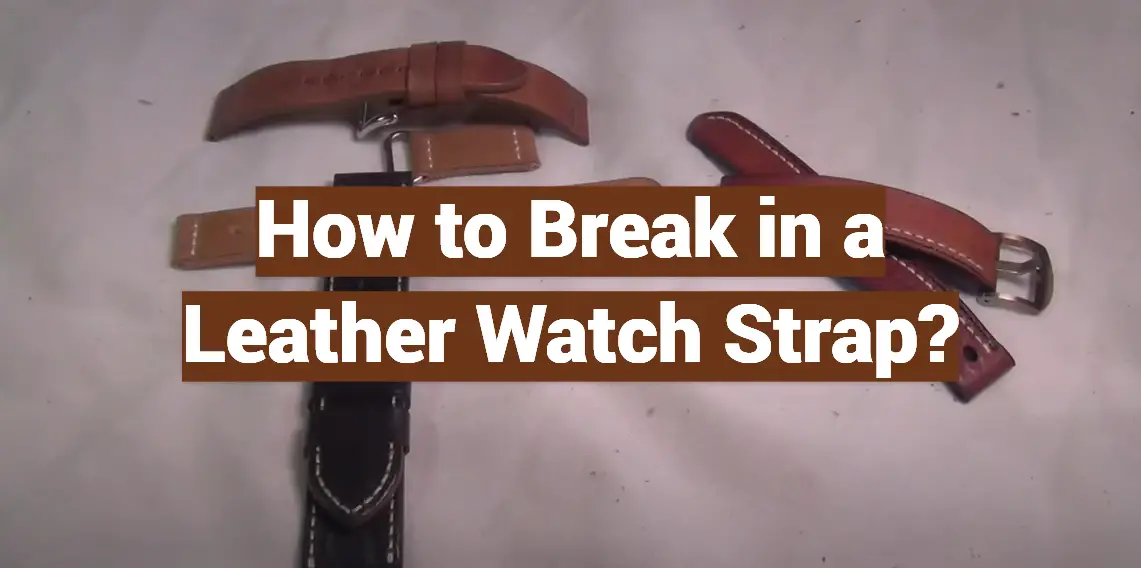
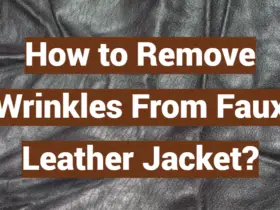




Leave a Reply